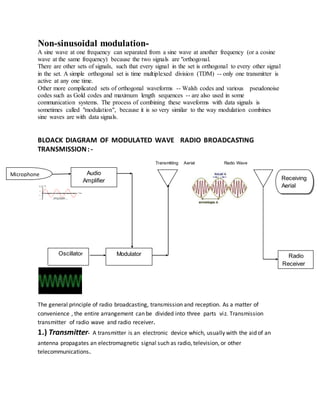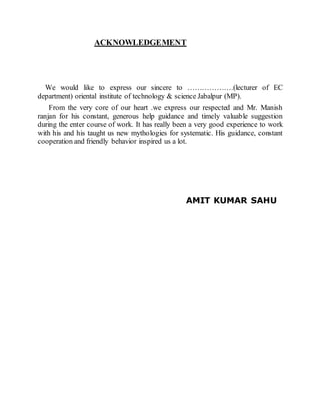Modulation is the process of varying one or more properties of a high frequency carrier wave in accordance with a modulating signal. This is done to transmit data signals that are not always suitable for direct transmission. There are three main types of modulation: amplitude modulation varies the amplitude of the carrier wave, frequency modulation varies the carrier frequency, and phase modulation varies the carrier phase. Demodulation is the process of extracting the original information-bearing signal from the modulated carrier wave at the receiver. Modulation is necessary because practical antenna lengths require high frequencies for transmission, audio frequencies cannot be transmitted over large distances if radiated directly, and modulated carrier waves have higher energy and operating range than non-modulated audio signals.








